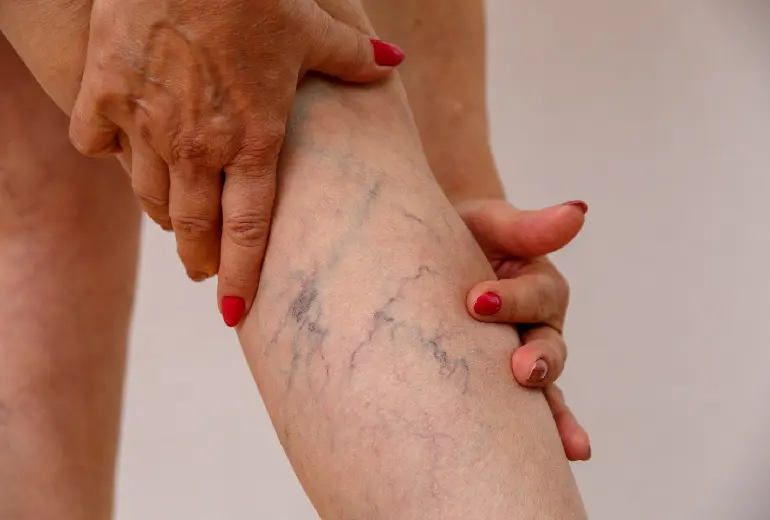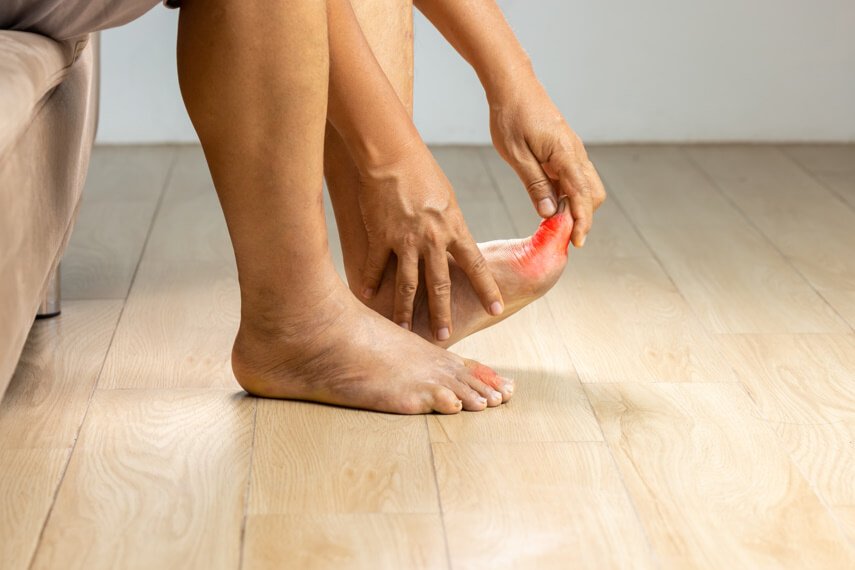10 Early Signs of Varicose Veins You Shouldn’t Ignore
Varicose veins are often dismissed as a cosmetic problem, but in reality, they can signal underlying circulatory issues that require medical attention. These twisted, enlarged veins usually develop in the legs and feet due to faulty vein valves, which allow blood to pool instead of flowing smoothly back to the heart. Recognising the early signs of varicose veins can help you seek timely care, avoid complications, and protect your vein health.
What Are Varicose Veins?
Varicose veins occur when the small valves inside your veins weaken or become damaged, making it difficult for blood to move upward against gravity. As a result, blood collects in the veins, causing them to swell, twist, and become visible through the skin. Although they can appear anywhere, they are most common in the lower body due to prolonged standing, walking, and the effect of gravity.They are more than a visual concern; early-stage varicose veins symptoms can progress to pain, swelling, skin changes, and even ulcers if left untreated.
10 Early Signs of Varicose Veins You Shouldn’t Ignore
A fasciotomy procedure is typically advised in:
Visible Veins on LegsThe most obvious and common sign is the appearance of bulging or rope-like visible veins on the legs. They may look blue, purple, or dark red and can become more noticeable after long periods of standing.
Leg Heaviness or FatigueOne of the early-stage varicose veins symptoms is a feeling of heaviness or fatigue in the legs, especially toward the end of the day. This happens because blood pooling increases pressure in the veins.
Swelling Around Ankles and FeetPersistent swelling, particularly in the lower legs, ankles, and feet, can be a sign that your veins are struggling to return blood to the heart.
Aching or Throbbing PainDull, aching discomfort or throbbing pain in the legs is a common complaint among people with varicose veins, often worsening after prolonged activity or standing.
Itching Around the VeinsSkin over or around the affected veins may become dry and itchy. This symptom is sometimes mistaken for skin irritation but can indicate underlying vein problems.
Skin DiscolourationAs the condition progresses, you may notice skin darkening around the ankles or lower legs. This occurs due to poor circulation and blood leakage from weakened veins.
Restless Legs at NightA frequent but overlooked symptom of varicose veins in the legs is restlessness or an urge to move your legs at night, which can interfere with sleep quality.
Muscle CrampsNight-time leg cramps can be linked to poor circulation from varicose veins. These cramps are often sudden, painful, and recurring.
Warmth or Tenderness Over the VeinInflamed or irritated varicose veins may feel warm, tender, or sensitive to touch. This can sometimes indicate superficial thrombophlebitis (a blood clot in a surface vein).
Delayed Healing of Minor InjuriesIf cuts or scrapes on your lower legs take longer to heal, it may be due to poor blood flow caused by varicose veins. This is particularly important to note for those with diabetes or other circulatory conditions.
When to See a Doctor
If you experience any of the above signs, especially swelling, pain, or skin changes, it is best to seek medical advice early. Ignoring early signs of varicose veins can lead to serious complications such as chronic venous insufficiency, skin ulcers, or deep vein thrombosis (DVT).
Diagnosis & Treatment Options
Diagnosis
Varicose veins are usually diagnosed through:
- Physical examination of the legs while standing.
- Duplex ultrasound to check blood flow and identify faulty valves.
Treatment of Varicose Veins in Feet and Legs
Treatment depends on the severity of symptoms:
- Lifestyle changes Elevating legs, exercising, avoiding prolonged standing, and wearing compression stockings.
- Minimally invasive procedures Sclerotherapy, laser therapy, or radiofrequency ablation to seal the affected vein.
- Surgical options Vein stripping or ligation for severe cases.
Modern techniques for the treatment of varicose veins in the feet are often outpatient-based, require minimal downtime, and are far less invasive than traditional surgery.
Prevention Tips
While not all cases can be prevented, you can lower your risk and slow progression by:
- Staying physically active improves circulation.
- Maintaining a healthy weight to reduce pressure on your legs.
- Avoiding long periods of standing or sitting.
- Wear compression stockings when recommended by your doctor.
- Elevating your legs when resting.
Conclusion
Varicose veins are more than a cosmetic concern. The early signs of varicose veins, from visible veins to aching, swelling, and skin changes, should be taken seriously. Prompt diagnosis and treatment can prevent complications, improve comfort, and enhance your quality of life. If you notice symptoms of varicose veins in legs, consult a vein specialist to explore suitable treatment options.
FAQs
Are varicose veins only a cosmetic issue?
No. While they can affect appearance, they often indicate underlying circulation problems and may lead to complications if untreated.
Can young people get varicose veins?
Yes. Though more common in older adults, they can occur in younger individuals due to genetics, hormonal changes, or lifestyle factors.
Will varicose veins go away on their own?
No. Without treatment, they may worsen over time. Early intervention helps prevent progression.
Is treatment painful or surgical?
Not always. Many modern treatments are minimally invasive and require little to no downtime.
How are varicose veins diagnosed?
Through physical examination and imaging, such as duplex ultrasound, to assess blood flow and valve function.
What lifestyle changes can help with early varicose vein symptoms?
Regular exercise, weight management, leg elevation, and wearing compression stockings can help.
When should I see a doctor for varicose veins?
If you notice persistent swelling, pain, skin changes, or non-healing wounds in your legs or feet, seek medical advice promptly.



.jpg)

